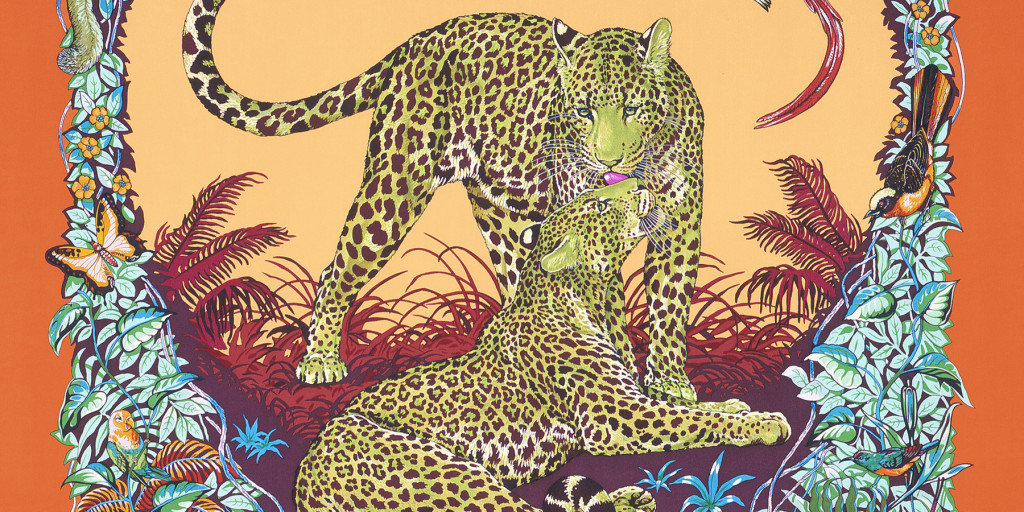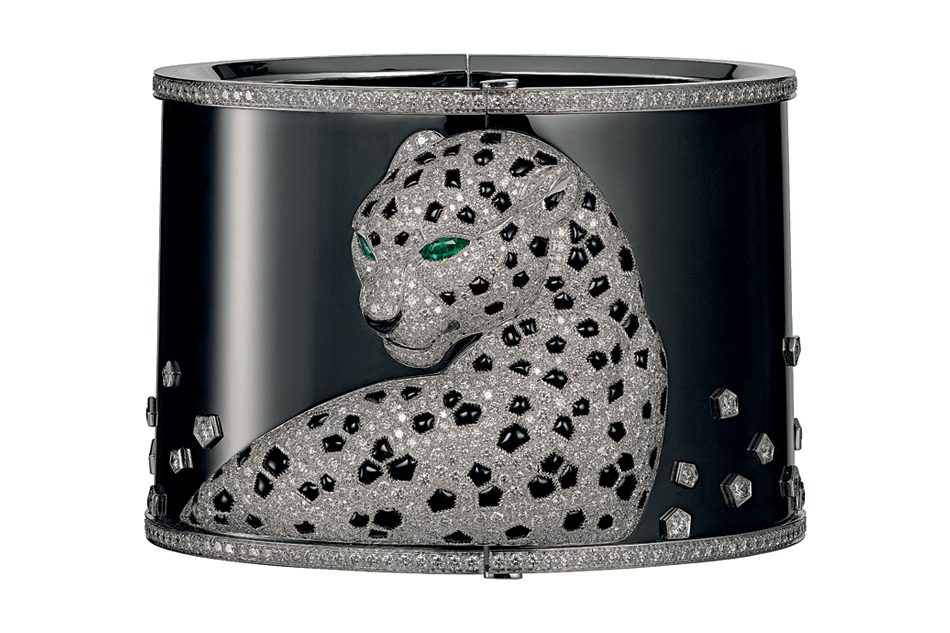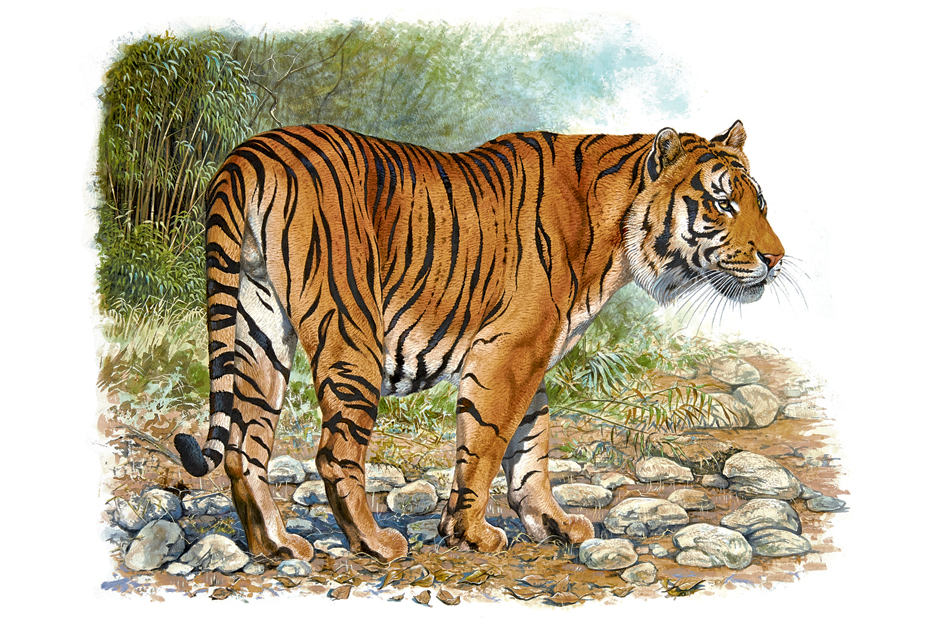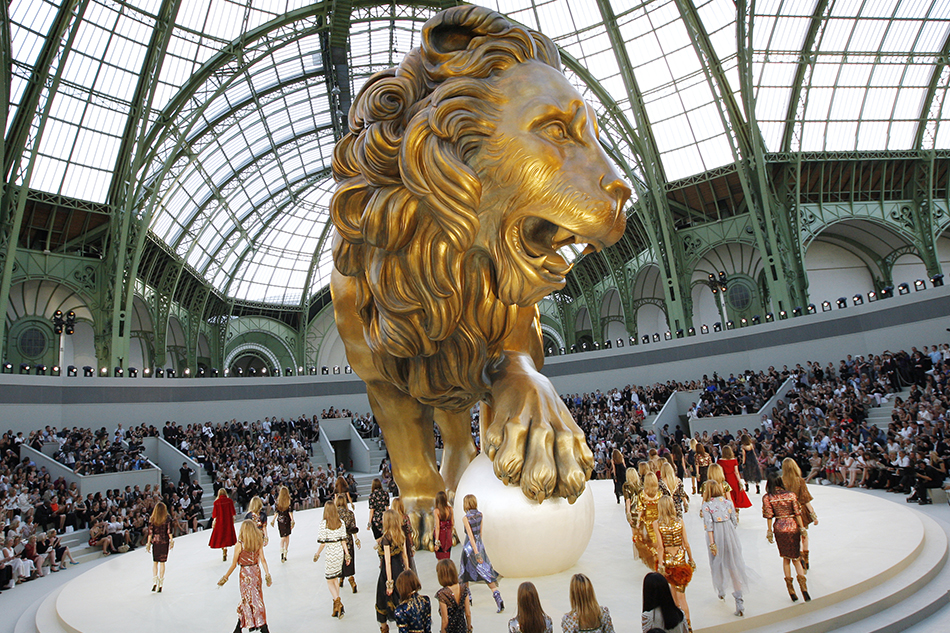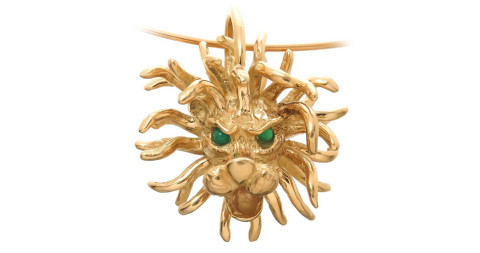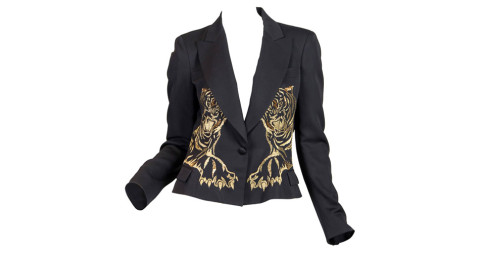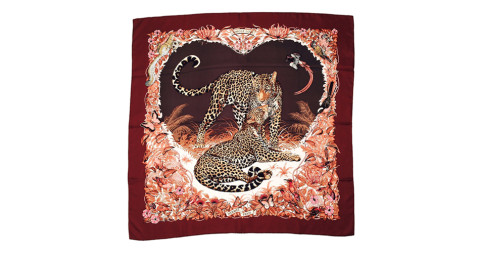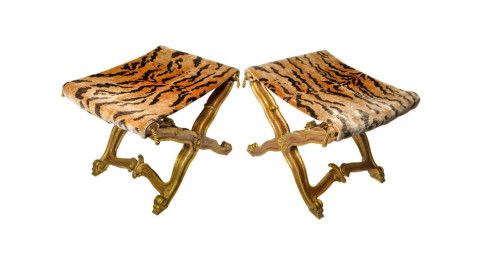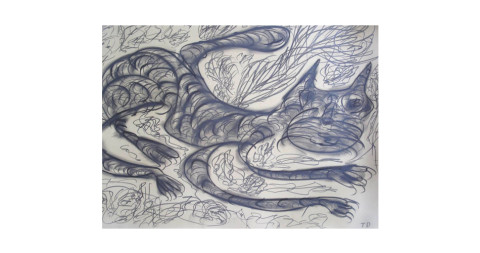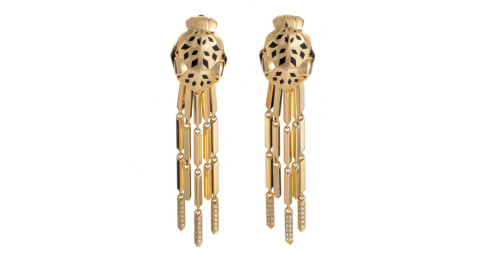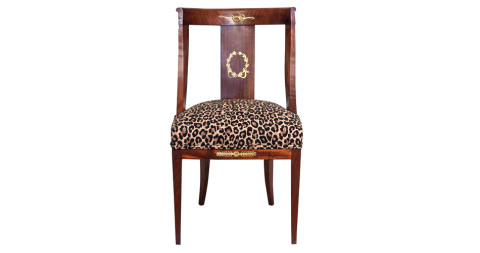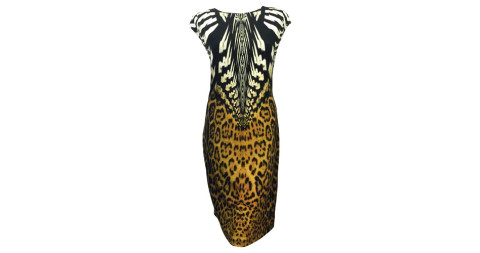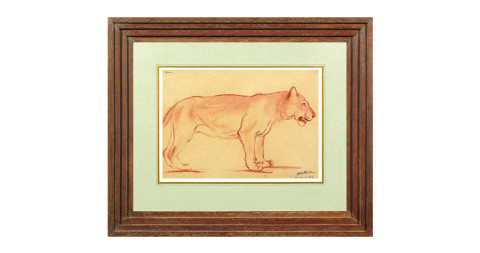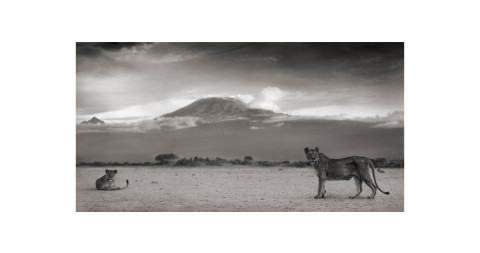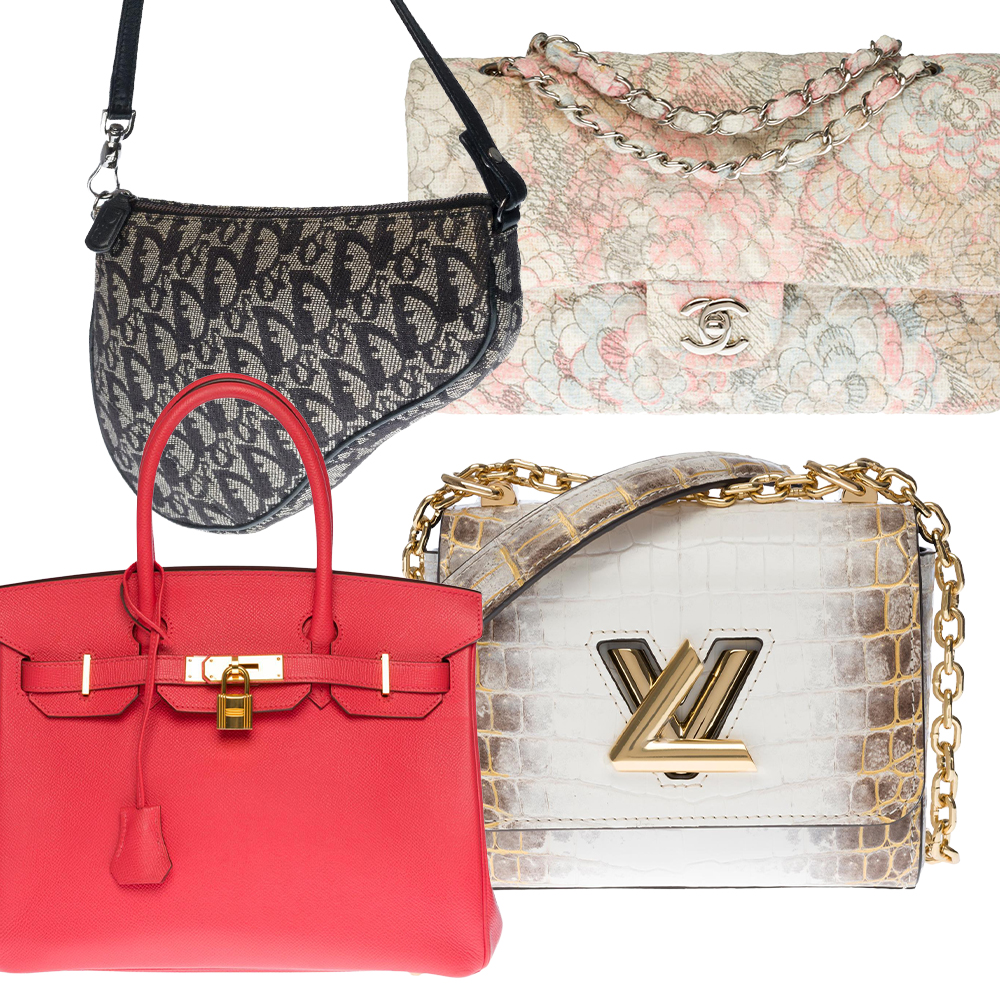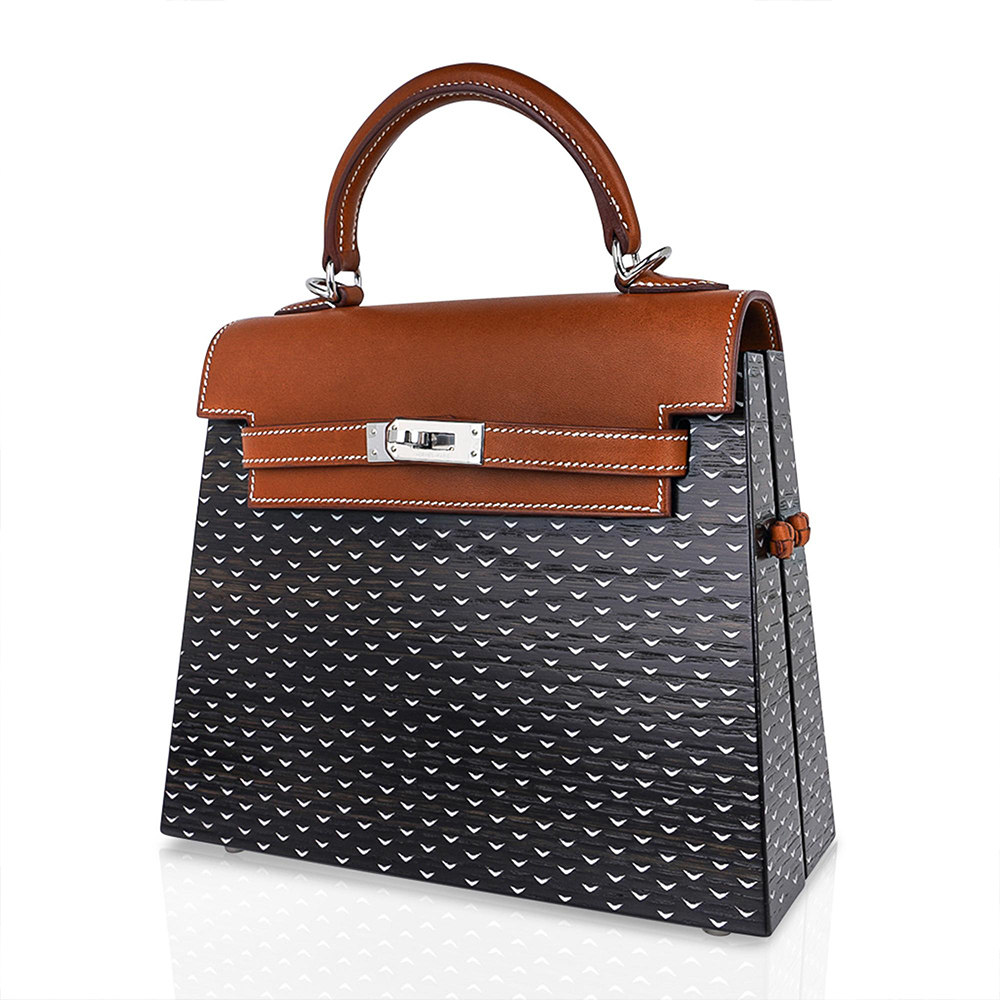
February 29, 2016The traveling show “Fierce and Fragile: Big Cats in the Art of Robert Dallet,” on view through March 13 at the Bruce Museum, in Greenwich, Connecticut, celebrates the work of Robert Dallet, whose illustrations graced Hermès scarves (photo courtesy of the Bruce Museum). Top: Dallet’s depiction of a leopard couple in Jungle Love, released by Hermès in 2000, shows the passion he had for big cats (photo © Hermès).
To draw animals properly, one would need two lives,” wildlife artist Robert Dallet wrote in 1984, “such is the difficulty of this art, and so rich is the animal kingdom with its thousands of species, each more beautiful than the last.”
His statement was a kind of prophecy, as within a year he would meet Jean-Louis Dumas, then the president of Hermès, who proposed the collaboration that would give Dallet a second life — in the realm of fashion. Dallet’s compositions went on to grace 25 silk scarves produced by the family-run luxury-goods company, as well as products ranging from wallpaper to ready-to-wear garments. His specialty was big cats, a subject that has long fascinated both artists and designers alike.
The exhibition “Fierce and Fragile: Big Cats in the Art of Robert Dallet,” which debuted earlier this year at the Bruce Museum, in Greenwich, Connecticut, celebrates his vivid depictions of tigers, lions, leopards, cheetahs and jaguars. “My father loved all animals, but he had a special passion, fascination and admiration for felines,” says Frédéric Dallet, the late artist’s son. “He described wild cats as ‘one of nature’s greatest successes.’ ” The show, which will travel to Europe and Asia over the next two years, is part of a philanthropic initiative undertaken by Hermès and the wild-cat-conservation organization Panthera.
“Dallet devoted his life to conveying the beauty and mystery of wild cats, but as a realist, he despaired of their chances for long-term survival in a world that was increasingly hostile to them,” explains Pierre-Alexis Dumas, the artistic director of Hermès and son of Jean-Louis. “Fierce and Fragile,” on view at the Bruce through March 13, brings together some 60 paintings, drawings and sketches from the Hermès collection and that of Frédéric, who opened up his father’s unpublished archives for an accompanying book (out March 22 from Actes Sud and Hermès).
Raised on a farm in Normandy, Dallet honed his artistic skills in Paris, where he sketched the residents of the Zoo de Vincennes and learned anatomy as an observer at animal autopsies. His later visits to Africa — initially for a 1975 illustration project commissioned by Air Africa — brought about a dramatic shift in his work.
“When he saw animals living in their natural habitat, he realized everything was different — their behavior, of course, but also the colors and smells,” says Frédéric, who accompanied his father on many African adventures. “And he came to understand that for a painting, representing the landscape in which an animal lives is just as important as representing the animal itself.”

Walking Panther, by Rembrandt Bugatti, 1904
Dallet designed his first scarf for Hermès in 1988. Called Kenya, the silk square depicts a lion and lioness encircled by leaping impalas. It was an instant hit. “This work set the tone,” author Nadine Coleno writes in the essay she contributed to the show’s catalogue. “Each new design would be a fragment of life in the wild, like a story of the ways and customs of the animal world.” Among Dallet’s other exceptionally detailed designs were Jungle Love, from 2000, and Les Tigreaux, released in 2012. According to his son, the latter would have brought the artist, who died in 2006, particular pleasure. “He loved all of the wild cats,” says Frédéric, “but I know he had a soft spot for the tigers.”
With his passion for majestic felines, Dallet was in good creative company. Italian sculptor Rembrandt Bugatti, the younger brother of famed automobile maker Ettore Bugatti, also obsessively studied his exotic subjects at the zoos of Europe. Among his best-known works are bronzes of panthers and lions, which, like Dallet’s illustrations, are portraits of individual animals rather than composite depictions of a species. But whereas Dallet devoted much of his time in the field to creating the photographs that he would later work from, Bugatti sculpted while in the presence of his animal models.
Fittingly, fashion legend Gabrielle “Coco” Chanel also had a special affinity for lions. “I’m a Leo, and like a lion, I use my claws to prevent people from doing me harm,” Chanel once said. (She was born under the fifth zodiac sign, hence her favorite number and the name of her perfume.) A lion statuette was her constant companion, and it remains on display in her Paris apartment at 31 Rue Cambon, which the Chanel corporation has preserved as a shrine to its founder.

A romantic dress embroidered with tigers — reminiscent of those seen on souvenir jackets in the 1980s — stood out in Gucci‘s Fall/Winter 2016–17 collection. Photo courtesy of Gucci
As for Chanel’s designs, “lion heads were often used on the gilt buttons and gilt-chain belts of her post-1954 suits,” curators Harold Koda and Andrew Bolton explained in the catalogue for the Metropolitan Museum of Art’s 2005 Chanel exhibition. The motif remains a favorite in Chanel Fine Jewelry lines, and creative director Karl Lagerfeld made lions the stars of Chanel’s Fall/Winter 2010–11 haute-couture collection, erecting a monumental version of Coco’s figurine at the heart of the runway show.
At Cartier, pride of place has long been given to the panther (a general name for jaguars, leopards and cougars). This seductive signature emerged in a 1914 bracelet watch that featured a diamond panther flecked with black onyx. The piece was likely designed by Charles Jacqueau, who was sketching panthers and other big cats as early as 1913. “By that time, the panther was already a pervasive theme in art, design, fashion and interiors, a symbol of exoticism, colonialism, the romance of adventure and the concept of the noble savage,” Vivienne Becker writes in Cartier Panthère (Assouline), a sumptuous 2015 volume that traces the history of the Cartier panther style popularized by Jeanne Toussaint.
At this year’s fashion weeks in Milan and New York, big cats again stole the spotlight. Alessandro Michele, the new creative director of Gucci, cross-referenced 1980s power dressing and souvenir jackets of the same era, complete with tiger motifs and colorful landscapes where the animals might have roamed. At Alberta Ferretti, where boxy silhouettes reigned supreme, suede jackets and glamorous dresses were similarly emblazoned with fierce felines.
Of course, for Dallet, big cats were not a luxury but a necessity. “We need to have tigers, panthers and ocelots in their natural habitat,.” Dallet said, “for their presence contributes to the universal harmony that is vital if man is to achieve his destiny.”
